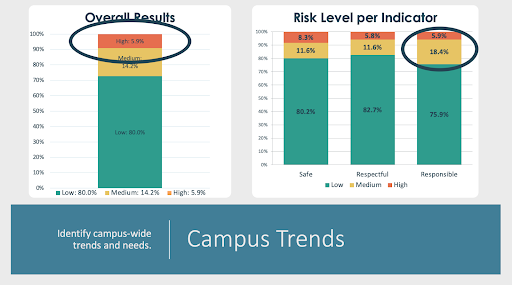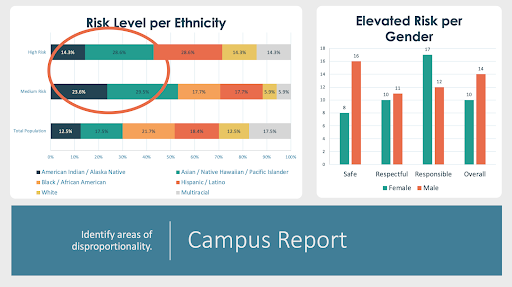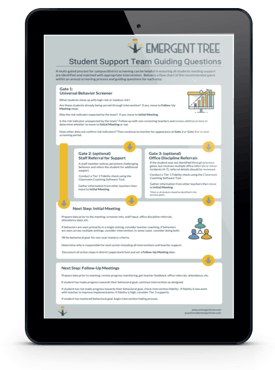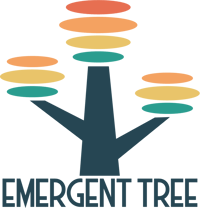A Birdseye View
Have you ever had a migraine? They can be debilitating for people and cause havoc to your body. Doctors will often share with folks who have migraines that some symptoms and triggers can be anticipated before the migraine hits. If you can identify those symptoms or triggers, you can often minimize or eliminate the migraine from hitting so hard. Making it happen takes some self-assessment and awareness, but imagine the difference it can bring.
Now, imagine if you had a birdseye view of the symptoms and triggers that might come your way. You might shift how you approach your day, remove certain types of food or activities from your path, and adjust your routine. Even further, what if someone else, without your own personal habits or preferences, looks at that birdseye view and gives you some pointers?
This birdseye view is what teachers need to help their students.
Day to day, teachers are juggling a lot and navigating many complex situations to support their students' needs, who are all very different. But what if you had a tool that helped you leap up to the sky with the birds and look down at your classroom to understand the most significant areas of need for behavior skills? What if you could look at a whole campus and see the areas of strength and the areas of challenges you need to work on together?
We do this today by creating benchmarks and fluency measures to identify areas to adapt curriculum pacing or other critical academic needs. What if we applied this same structure of benchmarking and assessment to behavior? If we don’t assess how things are going, we can’t have a good direction for where to go next.
Leveraging the Universal Behavior Screener
How might you do a behavior assessment like this? What might it look like for a campus to utilize? We have a tool that can be leveraged campus-wide with simple steps and help guide the behavior conversation:
- Teacher completes a short assessment around the behavior skills of their students at different intervals, providing a more direct evaluation of the day-to-day engagement from the teacher.
- Data across the campus is compiled into easy-to-read graphs showing areas of strength and need.
- Risk levels are assessed, and teams create actionable game plans to impact the areas of need.
- Regular assessments can help identify areas of growth where fading can happen and areas of need where further instruction is still required.

The unique element of a tool like this is that it brings the team together. Caring for our students is a group effort; one person alone cannot solve everything. We must work together, support each other, and learn from the results.
- Which student groups show up with elevated risks in their behavior?
- Are these students already being served through intervention?
- Was the risk indicator expected by the team or unexpected?
- Does other data confirm risk levels?
How can the Universal Behavior Screener help?
At its core, the Universal Behavior Screener helps neutralize the conversation. The data can take the emotion out of the conversation. Behavior can be so personal, and we know that our campus teams are passionate about giving their all for their students.
A tool like this allows campus support teams to be strategic and know how to invest their time and resources into their students to support them in their areas of need.
Here are some areas to leverage the Behavior Screener:
- Tier 1 - helps measure the "health" of the campus systems by identifying areas of strength and areas to reteach or strengthen skill instruction campus-wide.
- Tier 2 - helps us identify at-risk areas.
- Yields more data for hard conversations, bringing a holistic view of demographics (race, gender, age, fluency, etc.).
- Provides breakouts by campus, grade level, and classrooms so everyone clearly understands areas of need for behavior skills.
- Identifies where a fidelity checklist might be needed based on the results for the level of risk and need (focus on the areas that need investment and resources).

But doesn’t disciplinary reporting tell us what we need to know?
Discipline doesn’t tell us the whole story. Let's face it, we all have hard days. We all have moments where something made us sad or frustrated, and we let that emotion out on those around us. We experience this. Our students also experience this.
In addition, office discipline referrals are always a trailing indicator, letting us know about potential student risk after the student has already disrupted instruction, broken relationships, and potentially developed a failure identity. If screening aims to predict risk, office discipline referrals are just too late.
The important thing to recognize is growth over time.
Are they able to manage their frustrations in more situations than not? Are they learning behavior skills or strategies to guide them through these challenging times? Looking at the timeframe when the last referral or reprimand happened doesn’t help us understand if a student is regressing. The birdseye view sees growth areas and how the student started the year compared to where they are now, telling us where the student is and how we can further support their growth.
Imagine if a student was struggling in a particular area but excelling in another. If you didn’t know the difference, you might focus your efforts on supporting their area of strength instead of their area of need. That might be a frustrating experience for both you and the student.
Being informed allows you to take the right action.
More time is spent on the necessary areas, and less time is spent overall because you act with consistent, tactical information.
We all want to see growth in our own lives and in our students’ lives. That’s just natural. It’s the how behind it that often is hard for us to nail down when a student is struggling. Leveraging the Universal Behavior Screener will help you identify the how and give you a roadmap for how to intentionally and specifically help your students where they need it most.
Jump in the air with us and take a birdseye look at your campus to see how you can intentionally and uniquely support each student’s behavior needs.

We’d love to give you a tool we’ve found to be helpful in guiding your team through this process.
Here are some resources to help you on your own journey:
- Check out our Universal Behavior Screener & request a demo!
- On-Demand Webinar: Universal Behavior Screening in Multi-Tiered Systems of Support



Comments